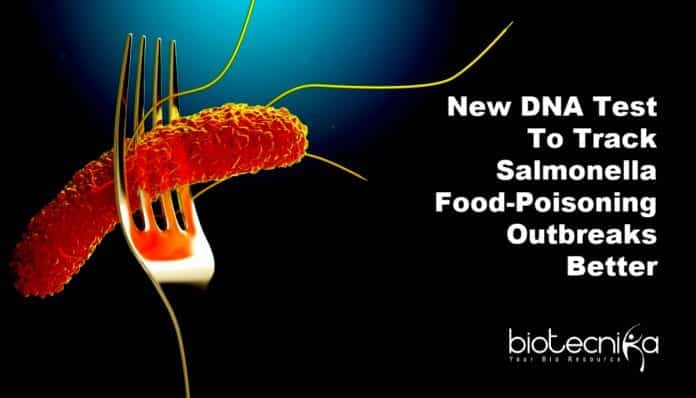New DNA assay to detect and improve tracking of Salmonella food-poisoning outbreaks
Scientists report the development of a sensitive as well as a specific assay to detect various serotypes of Salmonella, leading the way for rapid serotyping directly from specimens. This advancement upon current testing techniques can play a vital function in tracing the origin of infection rapidly. The study is published in the Journal of Molecular Diagnostics, released by Elsevier.
Food poisoning due to Salmonella bacteria results in 1.35 million infections, 26,500 hospitalizations, and 420 fatalities in the US each year as per current data from the Centers for Disease Control and Prevention (CDC). The rate and the simplicity of a test to detect specific types of bacteria during outbreaks are essential for public health investigators to find the source.
Professor Ruiting Lan, Ph.D., of the School of Biotechnology and Biomolecular Sciences, the University of New South Wales, Australia said, “Very sensitive approaches are needed to detect Salmonella in food or clinical sample as they may be present at extremely low levels. MCDA – Multiple cross-displacement amplification is an approach that can detect really low amounts of DNA rapidly and is likewise carried out at a single consistent temperature
, as opposed to other techniques such as PCR in which temperature levels have to be changed. This makes it suitable for easy, fast, and sensitive bacterial detection test. An MCDA test for Salmonella is already available but it does not differentiate between various serotypes”.For each of the seven serotypes – specific targets of Salmonella, an MCDA assay is developed by the investigators. These assays detect as few as 10 copies of Salmonella DNA accurately and can produce results in around 8 minutes. These assays can simplify any kind of future application in scientific or industrial setups as they do not need specialized devices. Salmonella detection can be accelerated and simplified by combining these 7 serotype-specific assays with the existing species assay.
Professor Lan said, “As the gene markers used were selected based on analyzing thousands of genomes, the assays developed in this research are special. Therefore, in the period of culture-independent diagnostic testing these markers future proof Salmonella serotyping”.
To differentiate Salmonella serotypes – conventional approaches involve growing the bacteria from samples and testing them afterward to assign them to a serotype. As the MCDA test does not call for first growing the bacteria in culture, the method is much faster. Additionally, it can detect Salmonella DNA in extremely low amounts.
The authors selected the 5 Salmonella serotypes most typically occurring in Australia, which triggers greater than 85% of Salmonella infections in that country, although there are numerous Salmonella serovars. Scientists believe the outcomes are applicable to other geographical regions as at least 2 of these serovars are also the leading Salmonella serovars throughout the globe.
Salmonella bacteria normally live in intestinal tracts of humans and animals and are shed via feces. Humans can get infected with Salmonella by ingesting contaminated water or food like undercooked or raw meat, eggs or its products, or poultry. The signs and symptoms of Salmonella poisoning include vomiting, headache, diarrhea, nausea, fever, and abdominal cramps.
Author: Sruthi S






























